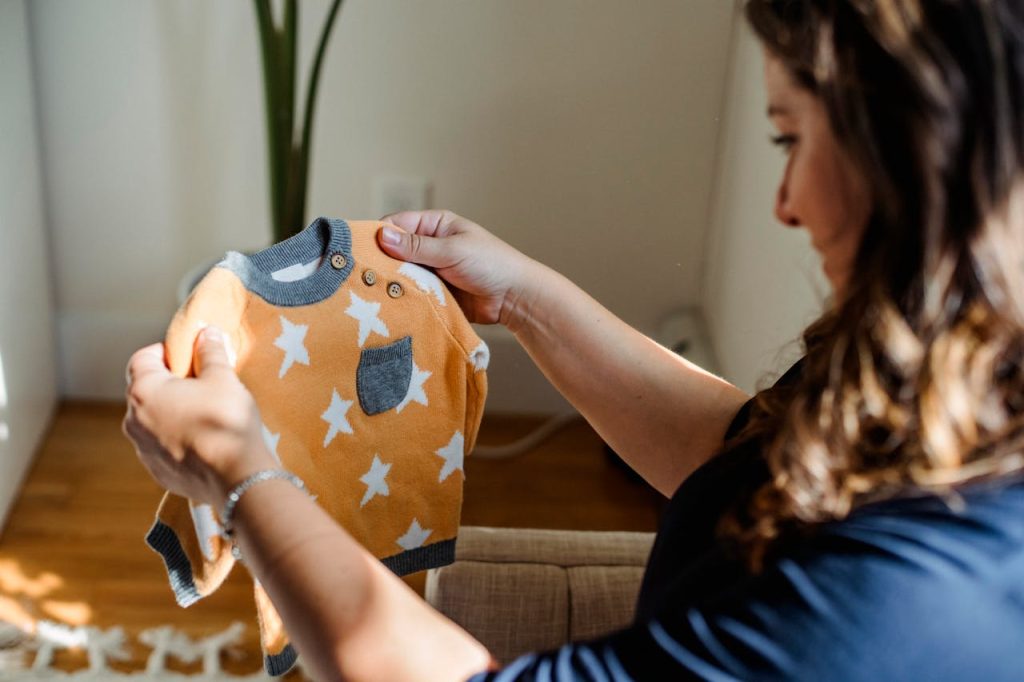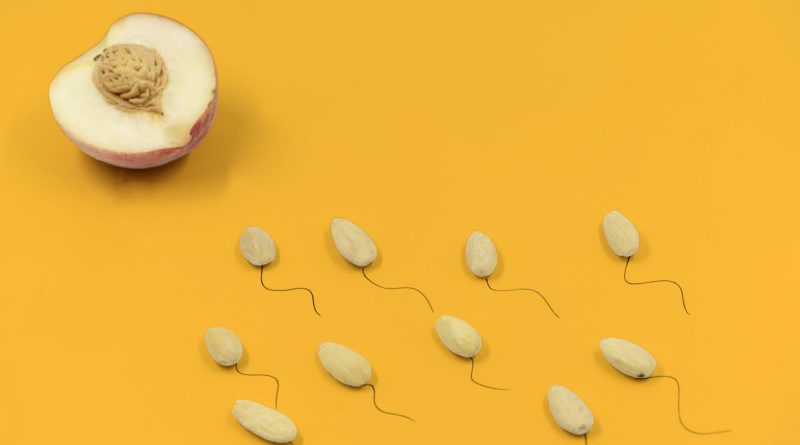Cultivating Parenthood: The Journey of Conceiving with Donor Sperm
Conceiving with donor sperm is a common option for individuals or couples who are unable to conceive using their own sperm due to various reasons, such as male infertility, genetic disorders, or same-sex couples. Here are the basic steps involved in conceiving with donor sperm
Selecting a Donor
The first step is to choose a sperm donor. Donor sperm can be obtained from sperm banks or through known donors, such as a friend or family member. When selecting a donor, individuals or couples typically consider factors such as physical characteristics, medical history, education, and personality traits.
Sperm Testing and Screening
Sperm donors undergo rigorous testing and screening processes to ensure the quality and safety of the sperm. This includes testing for infectious diseases, genetic disorders, and other medical conditions. Donors also provide detailed medical and personal information for the recipient(s) to review.
Fertility Clinic Consultation
If using a sperm bank, the recipient(s) will need to consult with a fertility clinic. The clinic will provide information about the process, conduct medical evaluations, and discuss treatment options.
Sperm Selection and Insemination
Once the donor sperm is selected, it can be used for various fertility treatments, including intrauterine insemination (IUI) or in vitro fertilization (IVF). In IUI, the donor sperm is inserted directly into the uterus during the woman’s ovulation period, increasing the chances of fertilization. In IVF, the donor sperm is used to fertilize the recipient’s egg(s) in a laboratory setting, and the resulting embryos are then transferred to the woman’s uterus.
Monitoring and Follow-Up
After insemination or embryo transfer, the recipient(s) will undergo regular monitoring to track the progress of the pregnancy. This may involve blood tests to measure hormone levels and ultrasounds to monitor the development of the embryo(s).
Pregnancy
If successful, the recipient(s) will become pregnant and receive prenatal care throughout the pregnancy. The pregnancy is typically no different from a pregnancy conceived using sperm from a partner.

Donor sperm may be required for a variety of reasons
Male Infertility: In cases where the male partner is unable to produce viable sperm or has low sperm count, motility, or quality, donor sperm can be used as an alternative to achieve pregnancy.
Genetic Disorders: Couples with a history of genetic disorders or inheritable diseases may opt for donor sperm to avoid passing on those conditions to their offspring.
Single Individuals: Single individuals, including single women or men, who desire to have a child without a partner may choose to use donor sperm to conceive.
Same-Sex Couples: Same-sex female couples or transgender individuals who are biologically female may use donor sperm to conceive a child through assisted reproductive techniques such as intrauterine insemination (IUI) or in vitro fertilization (IVF).
Male Same-Sex Couples: Male same-sex couples who wish to have a biological child may opt for surrogacy with donor egg and donor sperm, or use a gestational carrier with donor egg and one partner’s sperm.
Avoiding Infectious Diseases: In some cases, using donor sperm from a screened donor may be preferable to avoid the risk of transmitting infectious diseases that a partner may carry.
Personal Choice: Some couples or individuals may choose to use donor sperm for personal reasons, such as preferring the characteristics of the donor or wanting to help someone else have a child.

Potential Complications
Using donor sperm for conception typically involves medical procedures like intrauterine insemination (IUI) or in vitro fertilization (IVF), which carry their own set of risks and potential complications. Here are some potential complications associated with using donor sperm
Medical Risks of Assisted Reproductive Techniques (ART)
Procedures like IUI and IVF carry inherent risks, including the possibility of ovarian hyperstimulation syndrome (OHSS), ectopic pregnancy, multiple pregnancies (increasing the risk of complications for both mother and babies), and adverse reactions to fertility medications.
Emotional and Psychological Stress
The process of using donor sperm to conceive can be emotionally challenging for both partners. Issues such as grief over infertility, concerns about genetic connections, and feelings of loss or inadequacy may arise and require support from counselors or therapists.
Legal Complications
Depending on the jurisdiction, there may be legal complexities surrounding the use of donor sperm, particularly regarding parental rights, custody, and financial responsibilities. It’s essential to consult with legal experts to understand the legal implications and establish clear agreements before proceeding.
Disclosure Challenges
Deciding whether and when to disclose to the child about their conception using donor sperm can be complex and may impact family dynamics. Open communication and honesty are crucial for navigating these discussions.
Genetic Concerns
While donors undergo thorough screening for genetic diseases and medical conditions, there is always a small risk of inherited genetic disorders. Additionally, the child may have questions about their genetic origins as they grow older, which may necessitate addressing these concerns sensitively.
Social Stigma
Some individuals or couples may face social stigma or judgment from others due to their decision to use donor sperm. This can contribute to feelings of isolation or shame and may require support from friends, family, or support groups.
Quality and Availability of Donor Sperm
Access to high-quality donor sperm may be limited, particularly for individuals or couples seeking specific donor characteristics. Waiting lists or limited availability may prolong the process and cause frustration.

The duration of the process
The duration of the process of conceiving with donor sperm can vary significantly depending on various factors, including individual circumstances, chosen fertility treatment, clinic availability, and legal requirements. Here’s a general overview of the timeline involved
Initial Consultation and Testing
The process typically begins with an initial consultation with a fertility specialist. Both partners may undergo medical evaluations, including tests to assess fertility levels, genetic screenings, and other relevant examinations. This phase may take several weeks to complete, depending on the clinic’s availability and scheduling.
Donor Selection
If donor sperm is chosen as the preferred option, the next step involves selecting a suitable donor. This process can take time as the recipient(s) review donor profiles, considering factors such as physical characteristics, medical history, and personal preferences. It may take several weeks or longer to find the right match.
Treatment Planning
Once the donor is selected, the fertility clinic will create a treatment plan tailored to the recipient(s)’s specific needs and circumstances. This plan may involve intrauterine insemination (IUI) or in vitro fertilization (IVF), depending on factors such as age, fertility status, and any underlying medical conditions. Planning and preparation for the chosen treatment may take several weeks.
Synchronization
In the case of IVF, if the recipient is using her own eggs, their menstrual cycle may need to be synchronized with the donor’s cycle or with the cycle of a gestational carrier. This process may involve medications to regulate the menstrual cycle and ensure optimal timing for embryo transfer. Synchronization typically takes a few weeks.
Treatment Cycle
The actual treatment cycle, whether it’s IUI or IVF, typically lasts several weeks. This includes ovarian stimulation (if applicable), monitoring of follicle development through ultrasound and blood tests, sperm preparation, insemination or fertilization, embryo culture (for IVF), and embryo transfer.
Waiting Period
Following the treatment cycle, there is typically a waiting period before pregnancy can be confirmed. This waiting period may last about two weeks after embryo transfer or insemination.
Pregnancy Confirmation and Follow-Up
If pregnancy is achieved, confirmation typically occurs through blood tests to measure hormone levels. Subsequent prenatal care will be provided to monitor the progress of the pregnancy.

Advantages of DI
Donor insemination (DI), or using donor sperm to achieve pregnancy, offers several advantages for individuals or couples facing infertility or other reproductive challenges
Overcoming Male Infertility: DI provides a viable option for couples where the male partner has infertility issues, such as low sperm count, poor sperm motility, or genetic disorders affecting sperm quality.
Genetic Screening: Donor sperm undergoes rigorous screening for genetic diseases, chromosomal abnormalities, and infectious diseases. This reduces the risk of passing on inheritable genetic disorders to the offspring.
Avoidance of Inherited Conditions: Couples with a history of inheritable genetic disorders may opt for DI to avoid passing on those conditions to their children. Donor sperm allows them to conceive without the risk of transmitting genetic disorders.
Control over Timing and Parenthood: DI offers control over the timing of conception and parenthood. Couples can choose when to undergo fertility treatment and when to start a family, independent of natural fertility cycles.
Flexibility in Family Building: DI provides flexibility in family building for various situations, including single individuals, same-sex couples, or couples where one partner is unable to produce viable sperm. It allows individuals and couples to fulfill their desire for parenthood regardless of their biological circumstances.
Privacy and Confidentiality: Using donor sperm provides privacy and confidentiality regarding infertility issues. Couples can choose to disclose the use of donor sperm to others on their terms, maintaining their privacy as desired.
Choice of Donor: Recipients have the opportunity to select a sperm donor based on desired characteristics, such as physical appearance, educational background, personality traits, and medical history. This choice allows recipients to find a donor who closely matches their preferences and values.
High Success Rates: DI can offer high success rates, especially when combined with assisted reproductive technologies such as intrauterine insemination (IUI) or in vitro fertilization (IVF). Success rates may vary depending on factors such as age, fertility status, and the chosen fertility treatment.

Disadvantages of DI
While donor insemination (DI) offers several advantages, it’s important to consider the potential disadvantages and challenges associated with this method of conception. Some of the disadvantages of DI include:
Emotional and Psychological Impact: DI can be emotionally challenging for both partners. Issues such as grief over infertility, concerns about genetic connections, and feelings of loss or inadequacy may arise and require support from counselors or therapists.
Lack of Genetic Connection: One of the primary drawbacks of DI is the lack of genetic connection between the child and one or both parents. This can lead to feelings of disconnection or identity issues, both for the child and the parents, particularly if the decision to use donor sperm is not openly discussed or if the child learns about their conception later in life.
Disclosure Challenges: Deciding whether and when to disclose to the child about their conception using donor sperm can be complex and may impact family dynamics. Parents may struggle with how to approach this topic sensitively and honestly, which can create tension or uncertainty within the family.
Limited Control Over Donor Selection: While recipients have the opportunity to select a sperm donor based on desired characteristics, they ultimately have limited control over the donor’s genetic makeup and potential health risks. Despite thorough screening processes, there is always a small risk of inherited genetic disorders or other medical conditions.
Social Stigma and Judgment: Some individuals or couples may face social stigma or judgment from others due to their decision to use donor sperm. This can contribute to feelings of isolation or shame and may impact their relationships with friends, family, or the broader community.
Legal Complexities: Depending on the jurisdiction, there may be legal complexities surrounding the use of donor sperm, particularly regarding parental rights, custody, and financial responsibilities. It’s essential to consult with legal experts to understand the legal implications and establish clear agreements before proceeding.
Costs and Accessibility: DI treatment can be expensive, particularly if multiple cycles are required to achieve pregnancy. Additionally, access to donor sperm and fertility treatments may be limited in some regions, leading to challenges in accessing care.
Potential for Medical Risks: While DI itself does not pose significant medical risks, the fertility treatments associated with DI, such as intrauterine insemination (IUI) or in vitro fertilization (IVF), carry their own set of risks, including ovarian hyperstimulation syndrome (OHSS), ectopic pregnancy, and multiple pregnancies.

Conclusion
In conclusion, donor insemination (DI) presents both advantages and disadvantages for individuals or couples seeking to conceive. The decision to pursue DI is highly personal and should be carefully considered in light of the specific circumstances and preferences of the individuals involved.
Advantages of DI include its ability to overcome male infertility, provide genetic screening to avoid inheritable conditions, offer flexibility in family building, and allow for privacy and control over the timing of parenthood. Additionally, the choice of a sperm donor enables recipients to select desired characteristics, enhancing the sense of agency in the process.
However, DI also poses challenges, including emotional and psychological impact, the lack of genetic connection between the child and one or both parents, disclosure complexities, potential social stigma, legal considerations, costs, and medical risks associated with fertility treatments.
Ultimately, individuals or couples considering DI should thoroughly weigh the pros and cons, seek support from healthcare providers and counselors, and make informed decisions that align with their values, desires, and circumstances. Open communication, careful planning, and access to resources and support networks can help navigate the complexities of DI and facilitate a positive experience for all involved parties.

